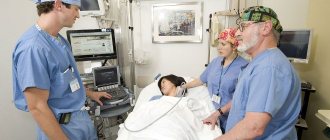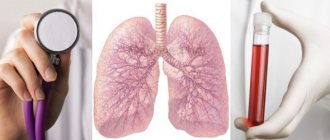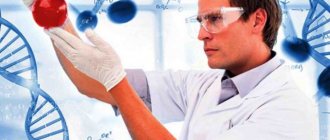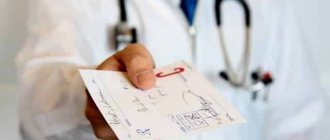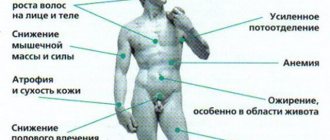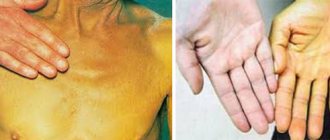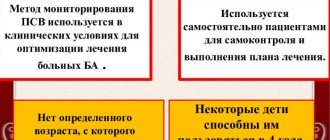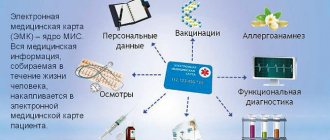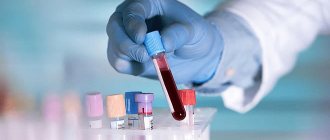HIV infection began to be diagnosed only at the end of the 20th century, and now many infected people are unaware of their status. Often people do not have time to visit a medical center, and some do not want to know about their HIV status. For such situations, rapid tests are produced, which at home will give a reliable answer in a few minutes. A rapid HIV test can be bought at a pharmacy, ordered online, and even received for free. Thus, after unprotected sex or another risky moment, everyone will be able to find out whether it is positive or not, and will not infect others, and will start taking medications on time. And if the answer is negative, he won’t worry in vain.
Indications for use and when to use
First of all, people at risk need to be tested for infection and buy an HIV test at a pharmacy.
These groups include gays, drug users, sex workers and their clients. Infection is possible in the following situations:
- unprotected sexual contact;
- medical procedures, tattooing or manicure using non-sterile instruments;
- artificial insemination;
- blood transfusion;
- possible infection of the fetus from a sick mother.
People who experience sudden weight loss for no apparent reason are also advised to get tested. If discharge or blood from a patient gets into a wound on the skin, it can also become infected. Even a doctor who works with patients’ biomaterial can become infected. There were no proven cases of domestic or insect bites. But if in doubt, it is better to purchase an HIV test from a pharmacy chain and dispel suspicions.
To determine the disease, you do not need to take an HIV test immediately after questionable contact. The duration of the incubation period or seronegative window in adults ranges from one month to a year. In infants it is sometimes only two weeks. But it makes sense to undergo testing no earlier than 3 months after the incident. A month after questionable contact, the disease can be detected in an infected person by antigens - virus particles.
Usually, the presence of a virus is indicated by the body’s response to the virus – the appearance of specific antibodies. The test will show these antibodies, but it is important to remember after what time they begin to be produced, indicating HIV. This is at least three months. Viral envelopes are practically insoluble in biological fluids, which makes diagnosis difficult. Once inside the immune cells, pathogenic microorganisms begin to multiply, but only after the incubation period is over, antibodies are produced.
To determine HIV infection, you need to buy a third-generation HIV test 12 weeks after the risk event. The fourth generation analysis will detect the virus after 4 weeks. In extremely rare cases, the window period can last 6 months. If, after receiving a negative result, the patient believes that he could have become infected, then he takes the test again six months after contact with the infected person.
On the Internet, you can type a query about how much it costs to take an HIV test at home, and whether it will be cheaper than in a laboratory. Its price will be at least 200 rubles, but can reach 990 rubles. For comparison, the cost of a laboratory ELISA test starts from 450 rubles. You can get a diagnosis at the clinic for 70 rubles, but the results will only be ready in a few days.
Busy people often ask where they can donate biomaterial to do a rapid test for HIV, because in this case there is no need to go to the doctor. Testing kits are sold in pharmacies, and the procedure is performed by the patient himself. That is, you can get tested at home without visiting a medical facility.
Advantages
Using an HIV test purchased from a pharmacy chain, a person receives a result in a minimum of 15 minutes, a maximum of 1 hour.
When visiting a medical facility, you will have to wait in line and come back a day or several days later for an answer. Even in leading clinics, results are returned no earlier than after 4 hours. Another advantage that the rapid HIV test distributed in pharmacies has is complete anonymity. The patient will not have to fear that his visit to the clinic will be noticed by friends. A man will get rid of the need to share details of his personal life with a doctor.
Residents of remote communities often use a rapid self-test for HIV. In this case, it may not be possible to conduct tests in a laboratory setting. Also, the cost of a home testing kit is relatively low.
If a rapid test is used to diagnose HIV, it distinguishes and detects pathogenic types of the virus. These are HIV-1 and HIV-2, each of which has several subtypes. The most common is group A, related to HIV-1. Such diagnostic kits are available in any hospital. They are used when it is necessary to examine a patient before emergency surgery or childbirth.
The attached instructions will help you find out how to test for HIV at home without the help of a doctor. Kits are now being sold that do not require blood donation. For diagnosis, peri-gingival fluid is used, in other words, saliva. Since there is no need for a puncture, the procedure is painless.
How long it takes to receive a response depends on the manufacturer of the kit you choose. For example, with OraQuick Rapid HIV-1/2 Antibody Test 20 minutes AIDS in the specified time allows for rapid diagnosis of HIV. Its cost is about 550 rubles. It is known that you can take an HIV test only after the end of the incubation period, but not everyone knows how much time should pass after infection. Medical websites give different figures, but to test at home you will have to wait 3 months.
When answering the question of how many minutes the test will show HIV, it is worth clarifying that exact numbers are not always indicated. In some cases, you only need to wait 15-20 minutes. The result is judged by the stripes that appear in the control window. You can decipher the result in a few minutes using the included instructions. You can take an express HIV test at any time; for an analysis - test at home, you do not need to consult a doctor. It is available without a prescription in all pharmacy chains. It is possible to order a kit via the Internet, which is convenient for those who are embarrassed to ask and contact the seller in person.
Because the test uses a recombinant viral antigen, some patients become concerned and ask whether they can become infected from a rapid HIV test. Doctors say this is impossible. However, manufacturers warn that the kit should not be used for other purposes. The effectiveness of tests, depending on the chosen variety, for express testing for HIV is 99-99.7%. They are not yet used for mass screening of the population, but are comparable in accuracy to the Western blot analysis performed by doctors.
Where and how to get tested
You can get tested during a visit to a doctor at a clinic or hospital, as well as in specialized private and public laboratories. Blood donation and transfusion centers are also available for the procedure.
You may want to get tested for HIV at a location that offers sexually transmitted infection prevention counseling.
It is possible to take either an “anonymous” or a “confidential” test, depending on your need. The second means that the test results go into medical records and the insurance company can also see the results. However, the results obtained are protected by privacy laws, so no one can see them without personal permission.
An "anonymous" test means that the name is not recorded during testing. You will receive an ID number which you will use to check your results. They will not be recorded in medical records or sent to the insurance company or health department. You are the only person who recognizes them.
Often testing for infection is part of a regular medical examination. For some industries and specialties this analysis is mandatory and annual.
Be honest with your nurse or doctor so they can help you figure out which tests are best for you. Don't be shy: the doctor should help, not judge. The idea of getting tested may seem scary, but try not to worry. This is part of taking responsibility and caring for your own health.
www.plannedparenthood.org
Flaws
Although an HIV test is not difficult to find on sale, few are in a hurry to purchase one. Not everyone has the money to buy a kit; it is often cheaper to undergo diagnostics at a medical facility. Thanks to the national project “Health”, you can get tested for free at the AIDS center of your city.
In any case, after self-testing, it is necessary to get tested in a laboratory, since the rapid HIV test does not give a 100% accurate result. According to biopharmaceutical statistics, up to five percent of responses are false positives. But not every user will understand it, and after receiving the result, they may become depressed and harm themselves. ELISA tests are still more accurate, so many people simply do not see the point of being tested twice and immediately go to the clinic.
It is dangerous for people prone to speedophobia to purchase express tests for HIV and AIDS. There are cases where people who have received a positive diagnosis decide to commit suicide. Specialized centers employ specialists who can provide psychological support. If a person is worried, it is better for him to get tested in the hospital.
False results
Unfortunately, despite the high accuracy of this type of analysis, from time to time rapid tests diagnose results whose reliability is questionable. This occurs due to the fact that the patient’s body, for one reason or another, produces antibodies similar to antibodies to HIV. False results also occur in situations where the analysis was carried out too short a time after infection. In this case, the body does not have time to produce the amount of antibodies that is sufficient to detect the virus.
- The rapid test will be false positive if certain types of proteins are incorrectly identified. The fact is that some inflammatory and oncological diseases, as well as pregnancy, sometimes provoke the appearance of proteins very similar to antibodies to HIV.
- The results of the rapid test will be false negative if the antibody concentration has not reached the required level. In other words, very little time has passed since the infection. This period is called the “window”.
If you question the reliability of the results, you can buy a rapid test and repeat it after a certain period of time. Ideally, you need to go to the clinic and get all the necessary tests. Only in this case the reliability of the diagnosis will be 100%.
Generations of rapid tests
Pharmacies most often sell a third-generation HIV test that can be used at home.
Since it only detects antibodies, it makes sense to do it only after the window period has passed. If you need to find out the diagnosis earlier, you should take a blood test for HIV p24 express antigen. At this moment, a person is already infectious to others, but antibodies have not yet been produced in sufficient quantities for diagnosis. P24 is a fragment of the virus itself, so it is usually found in the body already in the acute stage of infection. The latest, fourth generation HIV test detects antibodies and antigen; until recently, it could only be taken in a clinic. In 2012, a Japanese company released the Alere Determine HIV-1/2 Ag/Ab Combo kit, which allows you to make a fourth-generation express blood test for HIV without the help of health care workers. It has an overall clinical sensitivity of 99.9%. But it detects only HIV-1, the most common type in the Russian Federation and European countries. You will still have to be tested for HIV-2 and type 0 HIV-1 later, when antibodies begin to be produced.
How reliable is a positive test result?
Sometimes ELISA has false positive results (in about 1% of cases), the cause of such a result may be pregnancy, various viral infections, or simple accident. After receiving a positive result, a more accurate test is needed - an immunoblot, based on the results of which a diagnosis is made. A positive immunoblot result after a positive ELISA is 99.9% reliable - this is the maximum accuracy for any medical test. If the immunoblot is negative, it means that the first test was false positive, and in fact the person does not have HIV.
It is better to take a repeat test after 6 months and, to be sure, after a year or longer; in some cases, antibodies may appear in a very long time.
Types of express tests
They choose a home test for HIV, taking into account which generation they belong to - the third or fourth. It is necessary to decide which biomaterial is more convenient to use for research – blood or saliva. They also take into account the cost of the set, because not everyone can pay 500 or 1000 rubles for it. The instructions for use, which are included with any rapid HIV test, will help you figure out how to use the device. In this case, the help of a qualified physician is not required, however, in a medical institution, doctors can use a similar kit to quickly check the patient.
Retrochek
The third generation HIV retrocheck test has been implemented in Russia since 2004.
It shows the result 15-30 minutes after taking the sample. Testing uses whole blood, plasma or serum. Retrochek HIV is produced in India. According to the Russian Ministry of Health, 99.5% of negative answers are correct. The diagnostic kit includes all the necessary equipment:
- reaction cartridge;
- pipette for collecting material;
- buffer solution;
- lancet;
- gloves;
- disinfectant wipe.
You can read a detailed description on the manufacturer’s website, and instructions for use are also included with the HIV Retrochek set. It comes with the product and is also available in electronic form in pdf format. Retail price of the set is 245 rubles.
Description of how to test (instructions for use)
In order to carry out the test, you will need a timer, but it is not included in the kit, so you will need to buy one or use one you have at home.
- You need to open the package and take out the plate that is included in the kit. You also need to get all the other items that are in the box,
- How responsibly people approach the preparation of the analysis depends on how correct the result will be. Therefore, before starting the test, wash your hands and dry them.
- Once you are confident that your hands are clean and the test site is clean, we take out a scarifier and prick your finger to draw blood. A drop of blood is a sufficient amount required for analysis,
- After this, 5 drops are taken from the container with the solvent using a pipette and dropped onto the solvent receiver.
The point of the study is that with this test the patient spends a minimum of time and gets the result in just 15 minutes.
Please note: if more than 20 minutes have passed since the analysis was carried out, then it can no longer be read, as it loses its reliability.
ICA HIV 1 2 factor
The disposable kit is designed for testing using a blood sample.
The packaging must be stored at a temperature of +20-30 degrees; after opening, the tablet must be used within two hours. The shelf life of the sealed product is 2 years. In ICA for HIV 1, 2 factor, the test sample is absorbed by a certain area of the tablet. If the production of specific antibodies has begun, they react with protein A, which is conjugated with a suspension of gold nanoparticles. As a result, a colored complex is formed, which reacts with the recombinant antigen of the virus. Then a red stripe appears in the area of the letter T.
Safebox HIV test
A program is currently being implemented through which anyone can order a free test from this brand. Inside the box are telephone numbers, by calling which you can get checked again at a medical institution or consult a specialist. There is also a free hotline 8-800-700-17-38, by calling the phone you can find out how to get the kit. Diagnosis with Safebox for HIV is carried out using the third generation method - OraQuick Advance. Saliva is taken as the test sample.
Why go to an HIV testing room?
People decide to get tested for HIV for a variety of reasons:
- Knowing your HIV-positive status can help people get timely medical care that can prevent serious and life-threatening illnesses. For example, if you have HIV infection, some infections, such as syphilis, must be treated differently. Also, if you have HIV, it is very important to monitor your immune status and other indicators, which allows you to prescribe the necessary antiviral treatment in a timely manner and prevent the development of AIDS.
- Knowing that one is not infected can help a person decide how to make their behavior as safe as possible in relation to HIV. It may also be important for a person to know that he has HIV because he is concerned about the safety of his sexual partner.
- Diagnosing HIV infection helps prevent HIV transmission to the child during pregnancy.
- For some people, knowing their HIV status, even positive, may be less scary than constant worry and obsessive thoughts about possible infection. In any case, taking the test allows you to put an end to the painful uncertainty and make decisions about your future life based on knowledge about your health.
ImmunoChrome-antiHIV
This diagnostic kit is of the third generation, that is, the result is reliable no less than 12 weeks after questionable contact. The product is made in Russia, brand “Be Sure”. Anti HIV immunochrome is designed for taking blood samples for HIV 1 and 2, an express kit can be bought in an online pharmacy for 204 rubles. The package includes a diagnostic tablet with Stat-Pak series reagents, a lancet and a disinfectant wipe will have to be purchased separately. It is based on an immunochromic method of analysis, which is based on the reaction of an antibody contained in a biological material with an antigen.
Rapid saliva test
Most often, self-testing for HIV is carried out using peri-gingival fluid. Just like the blood of an infected person, the saliva contains antibodies, which will be detected during the analysis. This method is safe, since there is no need to break the skin. The collected saliva must be placed in a container for analysis no later than 30 minutes after taking the sample. And antibodies remain in the blood for no more than two minutes.
To understand how to determine the disease and whether HIV can be identified from saliva, it is necessary to consider its mechanism of action. Biological material is mixed with antigen and dye. As a result of a reaction with the antibodies that every person has, the first strip appears. If there are specific antibodies indicating the presence of a virus, a second band appears. At the same time, a rapid HIV test made using saliva has an accuracy of up to 99.9% in case of a positive answer.
Testing Features
When conducting testing, it is recommended to use fresh material; in rare cases, storing samples in the refrigerator is allowed. Freezing is strictly contraindicated. It is not recommended to shake biomaterials; the solvent is applied a minute after the blood has spread over the strip. There is no timer included, so it is important to check the time in advance.
Stages of the rapid test;
- empty all contents from the package;
- wash your hands, massage your finger;
- prick your finger with a scarifier;
- squeeze a drop of blood with light massage movements into a special receiver;
- drop solvent on top;
- wait 15 min.
Testing rules
Home blood testing for HIV is carried out in accordance with Order of the Ministry of Health of the Russian Federation No. 292 of July 30, 2001. The legal document regulates the use of enzyme immunoassay test systems designed to detect antibodies to this virus. Before use, it is better to look at the descriptions on the Internet and make sure that the purchased set is approved for sale in Russia.
Having purchased an HIV test, you must first read the instructions. Further diagnostics are performed according to the following scheme:
- Carefully remove the protective packaging and place the set elements on a clean and flat surface.
- The next step is to draw blood from a finger. To do this, the pad is pierced with a special instrument - a lancet. If a rapid saliva test for HIV 1, 2 is used, a cotton swab is used to collect biomaterial.
- Blood is immediately drawn into a pipette and dropped into a vessel with a buffer solution.
Now you need to lower the strip into the container, porous side down. It is important to place it up to the level of the control line. A saliva test is even easier to do; just dip a cotton swab with the sample into the special connector of the container.
When the time specified by the test manufacturer has passed, stripes of different colors will appear, indicating antibodies to HIV or their absence in a healthy person. The answer must be deciphered according to the instructions included with the specific set. Typically, one line in area C means that the test showed a negative result, that is, the person does not have this disease. Two bars indicate a positive response.
An empty window or only a test strip means that the HIV test is not working or the test was done incorrectly. In this case, you will have to purchase a new set and use it as written in the instructions.
How to pass the test correctly
Modern HIV tests are very accurate. It must be taken into account with the window period (the level of antigens to infection in the blood). For example, 4th generation tests detect 95% of cases 28 days after infection.
Confirmation three months after the initial analysis is always recommended. This is because 5% of people have a false positive result.
A positive response is confirmed using another type of analysis called Western blotting. It detects immune responses to specific HIV proteins and is 99.97% accurate. Very few medical tests are 100% accurate. However, rapid tests for HIV are among the most accurate methods for diagnosing all infectious diseases.
Tests that show a negative result are interpreted as negative. At this point, you can stop worrying. If the result is negative after four weeks, this means that you are most likely healthy. A test in three months will confirm this.
www.i-base.info
Accuracy of rapid HIV tests
The results obtained during self-diagnosis may have varying accuracy, and it depends on the test chosen. As a rule, the reliability of an HIV test is 98-99%, and differences of tenths of a percent between different manufacturers do not play a special role. Whether the diagnosis can be erroneous with this diagnostic method is quite understandable. There is always a possibility of error and the patient receiving a false negative or false positive result. In addition, a person must check the expiration date of the kit, observe the required waiting time and a number of other rules. Otherwise the results will be incorrect.
The home test shows a certain number of lines, and the answer depends on how many lines you get. But it only finds antibodies to the virus, which may not be detected in the patient. And during pregnancy or with diseases such as herpes, a false positive response is possible. Only fourth-generation tests detect both antibodies and antigens of the virus. Their results are highly accurate; previously they were only done in laboratories. Now you can find these in the pharmacy, but there is always a risk of an HIV test with false results, and when performing manipulations at home, the probability of error is 1-5%.
No matter how good the diagnostic kit is, no matter how many stripes appear, only a laboratory diagnosis is accurate. All instructions indicate that after the test it is necessary to be examined at an AIDS center. This is especially necessary for people at risk, in case of a positive response or serious suspicion of infection with the virus. In the initial tests, doctors will do an ELISA test, and the final testing is done using the immunoblotting method, which has an accuracy of 99.9%. A positive diagnosis is made if both of the above tests are positive.
The main advantages of pharmacy tests are high accuracy and ease of use. Thanks to them, it became possible to determine HIV in difficult conditions, when it is impossible to conduct a standard laboratory test. Many people cannot find the extra time to undergo diagnostics in the laboratory. Therefore, programs are being introduced around the world to distribute self-diagnosis kits, which are as easy to use as pregnancy tests. After all, a patient who knows his status will be able not only to prevent the development of AIDS and live a full life, but also to prevent the transmission of the disease to other people.
Variety of tests
Since medicine does not stand still, pharmaceutical companies produce a large number of rapid tests that are easy to use. But in terms of their configuration, they are almost all the same, so it’s not worth overpaying for a test that was produced by a world-famous company. In addition to tests produced in our country, on pharmacy shelves, you will find tests produced in other countries of the world. Now there are fourth-generation tests on sale, using them you can immediately test for two antigens.
